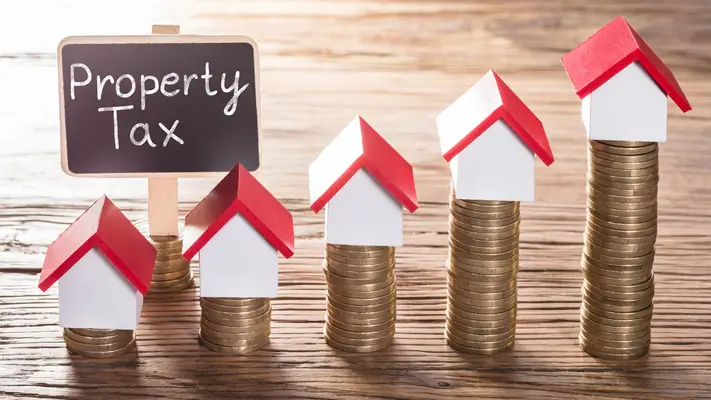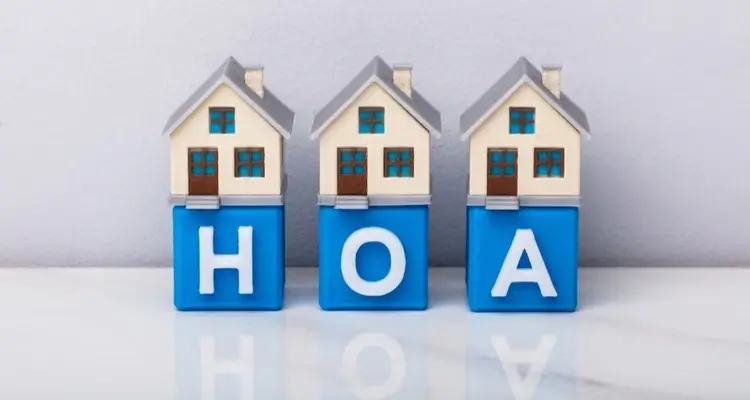
If you’re planning on buying a home this year.
You’re probably aware there are many different types of home loans available to you.
But how do you decide which type of mortgage loan should you choose?
We will go over all the mortgage programs available and discuss the pros and cons of each.
By the end of this article, you should have all the information you need to decide which kind of mortgage fits your needs the best.
RATE SEARCH: Get Approved for a Home Loan
Government Home Loans
During the Great Depression, in 1934, The Federal Housing Administration was created to make getting approved for a home loan easier.
The Government does not offer loans directly. They insure the loan in the event the borrower defaults on the loan. This makes the mortgage loan less risky for lenders allowing them to lower their loan requirements.
FHA Loans
- 3.5% down
- Minimum 580 credit score
- 43% DTI
FHA home loans are one of the most popular types of home loans used by first-time homebuyers. They have the lowest credit score requirements of any mortgage type.
If you have a 500 FICO score, you can qualify for an FHA mortgage with a 10% down payment. Borrowers with a 580 or higher FICO score may be eligible for an FHA loan with just 3.5% down.
Because of the low credit and down payment requirements, they are loved by first time home buyers. First-time buyers have lower credit scores and less savings on average, making FHA loans an excellent option. Another great benefit of FHA home loans is that the down payment can be a gift from a family member or friend.
There are also first-time homebuyer down payment assistance and grants you may be eligible for. You can check the HUD website to see programs in your state.
One of the only downsides of FHA loans is the mortgage insurance premium (MIP). The FHA MIP fee typically 0.85% of the loan amount annually. Check out our FHA MIP Chart.
Speak to FHA Lenders and See if You Qualify
VA Loans
- 0% down
- Minimum 580 credit score
- 41% DTI
If you’re a Veteran, then you may qualify for a VA home loan. Click here to get your certificate of eligibility. VA loans offer a wealth of benefits to those who are eligible, including zero down payment.
On top of getting 100% financing, VA loans don’t require mortgage insurance. No PMI means huge savings; the average homeowner saves about $2,000 per year on mortgage insurance.
USDA Loans
- 0% down
- Minimum 640 credit score
- 43% DTI
The U.S. Department of Agriculture doesn’t just offer food and nutrition services. They now provide mortgages in rural areas of the country. USDA / RHS loans offer a no down payment mortgage and have low mortgage insurance fees.
When you think of the word, rural, farms and ranches are probably one of the first things that come to mind. However, the USDA eligibility map shows that over 95% of the U.S. is eligible.
USDA home loans require a 640 credit score or higher to qualify.
FHA 203k Rehab Loans
- 3.5% down
- Minimum 640 score
- 41% DTI
FHA 203(k) loans are a type of home renovation loan. They will fund the purchase of a home and pay for repairs or renovations on the property.
FHA loans require the property to be in livable condition, not in need of repairs. With a 203k loan, you can buy a “fixer-upper” home in need of repairs and get the cash to make those repairs.
203k home loans have the same loan requirements as the FHA does. They require a 3.5% down payment. However, the credit requirements for 203k loans are higher than FHA. Most lenders want you to have at least a 640 credit score.
Conforming Home Loans
Conventional Loans
- 5% down
- Minimum 640 score
- 41% DTI
Conventional loans are known as conforming loans because they meet the guidelines of Fannie Mae and Freddie Mac. They are offered by private lenders and are not insured by the Federal Government.
They still require mortgage insurance with a loan-to-value ratio above 80%. However, the PMI fee is usually lower than FHA loans, around 0.50% in most cases.
Conventional loan requirements are more stringent than Government loans. They require a 620-640 credit score and down payment between 5% and 20%. One of the benefits of conventional loans is that mortgage insurance is not required if at least 20% is put down. PMI cancels once the LTV reaches 78%.
Real estate investors will need to get a conventional mortgage because Government-backed loans are for homeowners who intend to occupy the property as their primary residence only.
Conventional 97 Mortgage
- 3% down
- Minimum 660 score
- 43% DTI
A conventional 97 loan is similar to a regular conventional loan. However, it requires just a 3% down payment, hence the 97, standing for 97% loan-to-value. The 3% down payment is even lower than FHA loans, which require 3.5% down. You can speak to your lender to see if they offer this program.
See if You Qualify for a Conventional Loan
Non-Conforming Home Loans
A non-conforming loan is a loan that exceeds the conforming loan limits set by Fannie Mae and Freddie Mac. The conforming loan limit is $424,100 in most areas of the U.S. and goes up to $635,050 in certain high-cost areas of the country.
Jumbo Loans
If you need a loan that exceeds the conventional loan limit in your area, you will need to get a jumbo loan. Jumbo loans are more challenging to qualify for than traditional loans because of the higher loan amount.
Most lenders will want you to have at least a 680-700 credit score. Jumbo loans also require a higher down payment, usually between 15%-20% is the minimum down payment required.
Super Jumbo Loans
Jumbo loans offer loan amounts up to around 1 million dollars. If you’re buying a home and need a loan for over 1 million, you will most likely need what’s called a “super jumbo loan.”
A super jumbo loan can provide up to 3 million dollars to purchase your home. These mortgages are even more difficult to qualify for a require excellent credit.
Fixed-Rate vs. Adjustable-Rate Mortgage (ARM)
Most every type of home loan program will offer the option of a fixed-rate or an adjustable-rate mortgage. A fixed-rate mortgage will have the same interest rate for the life of the loan.
An adjustable-rate loan also called an ARM, would have an initial low-interest rate, usually for five years, increase annually.
30 Year Fixed-Rate – The 30-year fixed-rate mortgage is the most common term homeowners select. It will have the lowest monthly payment, and your rate will never increase.
15 Year Fixed-Rate – A 15-year rate will have a higher monthly payment, but more of your payment will go towards the principal balance. You will pay off your loan in half the time and save a ton in interest. 15-year mortgages also have a lower rate than 30-year loans; your mortgage rate could be as much as 1% lower with a 15 yr mortgage.
5/1 ARM – An adjustable-rate mortgage will have a low initial rate for the first five years of the loan. After five years, the interest rate will increase on an annual basis. An ARM mortgage is best suited for buyers who plan on staying in the home for less than five years, or who plan on paying off the loan in 5 years or less.
Home Refinance Loans
Rate and Term Refinance
This is a traditional refinance of a conventional loan or an FHA loan into a conventional. This type of refinance loan will lower your interest rate and monthly payment.
Many people who have an FHA loan will choose to refinance into a conventional loan to drop mortgage insurance.
Home Affordable Refinance Program (HARP)
The Obama Administration created the HARP program to help homeowners whose property values plummeted because of the housing market crash. With HARP, you can refinance your home loan into a lower rate even if you’re underwater on your mortgage. You’ll have to hurry because the HARP program is set to expire in September of 2017.
Home Equity Loans and HELOC
Home equity loans and HELOC loans use the built-up equity in your home as collateral for a loan. These are also known as a second mortgage because you will have two separate payments. A home equity loan provides you with a lump sum of cash up to 80% of the market value of your home.
A HELOC works like a credit card, giving you a line of credit you can borrow from as you need it. You only pay interest on the amount borrowed.
Cash-Out Refinance
A cash-out refinance is where you refinance your mortgage and get cash out using the equity in your home. You will have just one monthly mortgage payment, and the rates are lower than they typically are with a home equity loan.
As with a HELOC, you can cash out up to 80% of the value of your home with a cash-out refi.
Streamline Refinance
Government home loans such as FHA, VA, and USDA also offer a refinance program. FHA streamline refinancing is a quick and easy way to refinance your FHA loan into a new lower rate.
The great thing about streamline refinances is that they do not require a credit check or income verification. The process is “streamlined” and requires much less paperwork than a traditional refinance.
In Conclusion
With so many types of home loans available, choosing the one that’s right for you can be overwhelming.
It’s a good idea to speak to an experienced loan officer who can go over all of your options.
RATE SEARCH: Get Current Refinance Rates
Randall has over 15 years of experience in the mortgage and credit industries. He spends a chunk of time helping consumers understand their credit, advise them on how to increase their credit, and lending his mortgage expertise to help them find the right type of loan. Randall lives in Dallas, Texas with his two sons.



